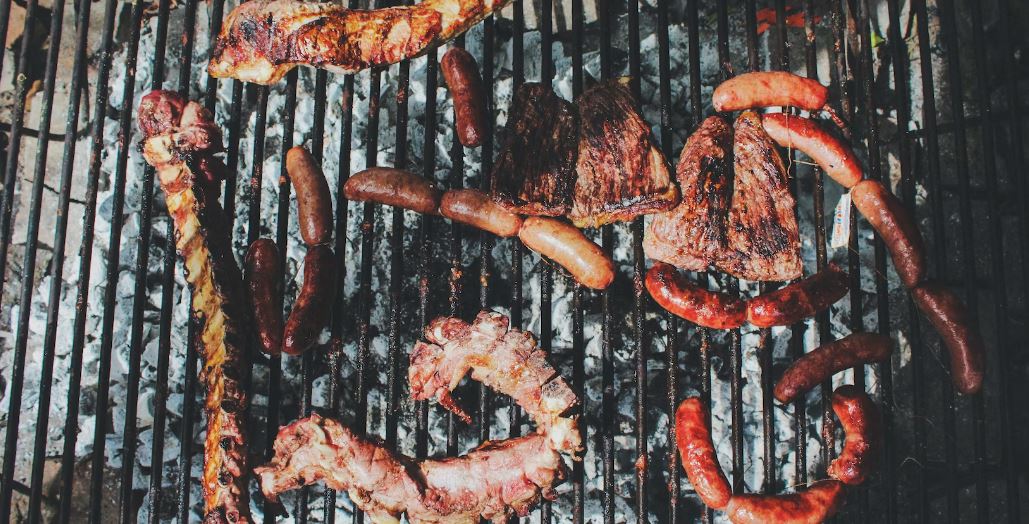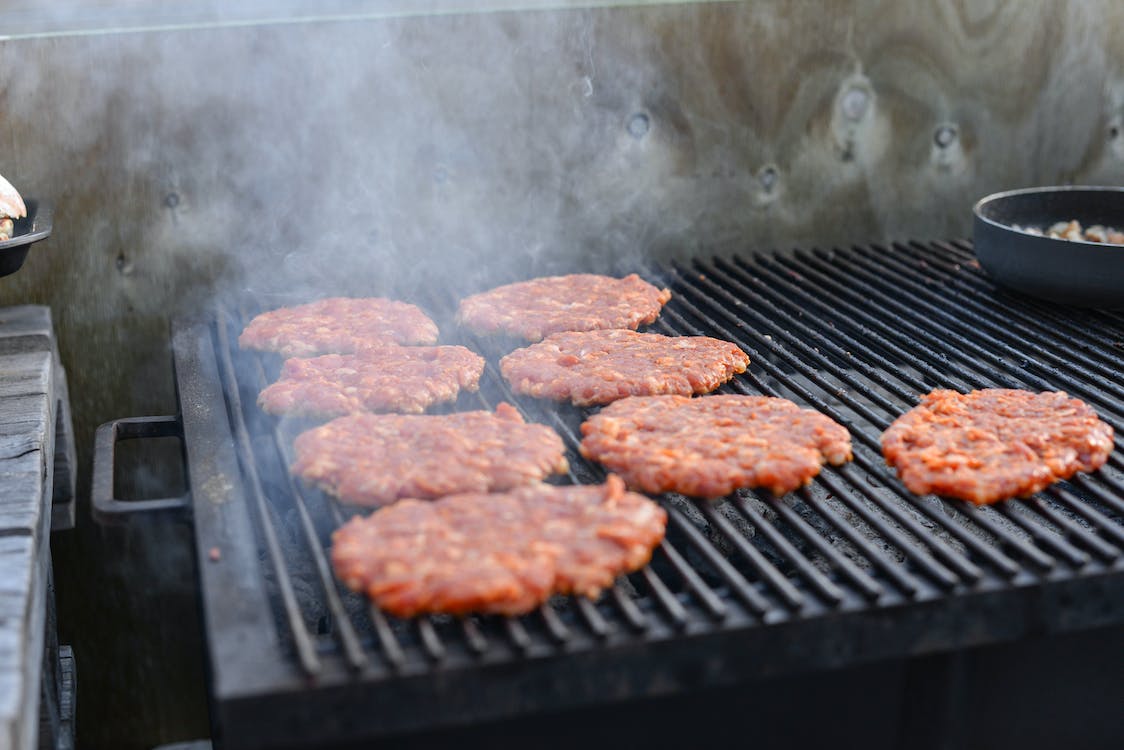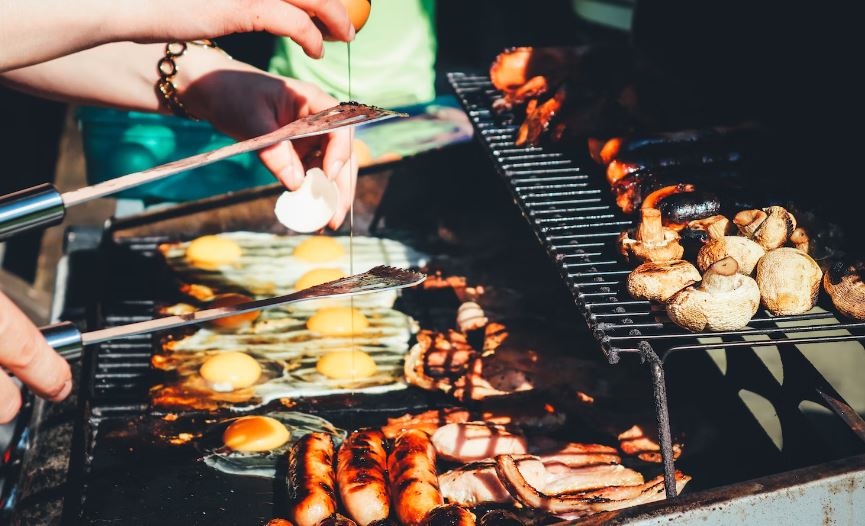Grilling is more than just cooking food. It is a culinary art form that requires precision and skill. One of the fundamental aspects of grilling that separates novice grillers from seasoned experts is the ability to master heat zones on your grill. Whether you are grilling steaks, vegetables, or even pizza, understanding and controlling temperature zones is the key to achieving perfect results every time.
This comprehensive guide will delve into the nuances of heat zones, how they affect your cooking, and the techniques you can employ to become a grill master. Whether you are a beginner or an experienced griller, you will find valuable insights and tips to elevate your grilling game.
The Science of Heat Zones
Before we dive into the practical aspects of heat zones, it is essential to understand the science behind them. At its core, grilling is the application of dry heat to food. By manipulating the temperature of your grill, you can control the cooking process and achieve the desired results. Heat zones play a pivotal role in this process.
Direct Heat Zone
The direct heat zone, often referred to as the “hot zone,” is the grill area directly above the heat source, such as the charcoal or gas burners. This zone is characterized by high, intense heat, making it ideal for searing, caramelizing, and quickly cooking foods. When you want those beautiful grill marks on your steak or to sear the surface of a burger, this is the zone you turn to.
Indirect Heat Zone
On the other end of the spectrum is the indirect heat zone, or the “cool zone.” This is the area of the grill where there is no direct heat source beneath the food. Instead, the heat is generated to the side or at a distance. The temperature in this zone is lower and more uniform, creating a gentle, slow-cooking environment. Indirect heat is perfect for roasting, smoking, and cooking larger cuts of meat that require longer cooking times.
Two-Zone Grilling
One of the most essential techniques for achieving grill mastery is the art of two-zone grilling. This method involves simultaneously setting up direct and indirect heat zones on your grill. Doing so creates a versatile cooking environment that allows you to sear your food to perfection and then finish it with gentle, indirect heat.
To set up a two-zone grill, follow these steps:
1. Charcoal Grill:
For a charcoal grill, arrange the coals so that you have a hot zone on one side and a space on the other. This can be done by piling the coals to one side and leaving the other side coal-free. Alternatively, you can use a charcoal basket or a two-zone cooking grate.
2. Gas Grill:
On a gas grill, preheat all the burners to high initially. Once the grill is hot, turn off one side’s burners to create an indirect heat zone while keeping the other side on high for direct heat.
Now that you understand the science behind heat zones, let us explore how to apply this knowledge to various grilling scenarios.
Perfecting Grilled Steaks
Grilling the perfect steak is a rite of passage for any aspiring grill master. Achieving that perfect sear while keeping the interior tender and juicy requires precise temperature control.
Searing: Direct Heat
For a beautifully seared steak, start by preheating the direct heat zone to high. Season your steak generously with salt and pepper and place it directly over the hot coals or flames. The intense heat will sear the surface, locking in the juices and creating those coveted grill marks.
Sear each side for 1-2 minutes, then move the steak to the indirect heat zone. Here, it will continue to cook more gently until it reaches your desired level of doneness. Use a meat thermometer to ensure accuracy:
- Rare: 120-130°F (49-54°C)
- Medium Rare: 130-135°F (54-57°C)
- Medium: 140-145°F (60-63°C)
- Medium Well: 150-155°F (66-68°C
- Well Done: 160°F (71°C) and above
Rest the steak for a few minutes before slicing to allow the juices to redistribute.
Reverse Searing: Indirect Heat
Another popular method for grilling steaks is the reverse sear. This technique involves cooking the steak indirectly first and then finishing with a sear. It is especially useful for thicker cuts.
Begin by placing the seasoned steak in the indirect heat zone and monitoring its temperature with a meat thermometer. Once it is about 10-15°F (5-8°C) below your target temperature, move it to the direct heat zone for a quick sear on each side. This method results in a uniform doneness from edge to center.
Grilling Versatile Vegetables
Grilled vegetables are a fantastic addition to any meal, offering a smoky flavor and delightful char. However, different vegetables require various heat zones and techniques for optimal results.
Direct Heat for Quick Cooking
Vegetables like zucchini, bell peppers, and asparagus cook quickly and benefit from direct heat. Preheat the hot zone, lightly brush the vegetables with oil, season them with your preferred herbs and spices, and grill them directly over the heat source. Turn them occasionally to ensure even cooking and a touch of char.
Indirect Heat for Slow Roasting
Dense vegetables like potatoes, carrots, and whole onions benefit from indirect heat. Coat them in oil, season well, and place them in the indirect heat zone. Close the grill lid and let them roast until tender when pierced with a fork. The longer cooking time allows the flavors to develop and the natural sugars to caramelize.
Mastering Pizza on the Grill
Grilling pizza is a delightful departure from the traditional oven-baked method. To create a perfectly crisp crust and delicious toppings, you’ll need both direct and indirect heat.
Direct Heat for Crust Crispness
Preheat the direct heat zone to high and oil your pizza dough to prevent sticking. Place the dough directly over the hot coals or flames and grill it briefly until it sets and develops grill marks. This step ensures a crispy crust.
Indirect Heat for Toppings
Once the crust is ready, move it to the indirect heat zone. Quickly add your sauce, cheese, and toppings. Close the lid and let the pizza cook indirectly until the cheese is melted and bubbly, and the crust is golden brown. This method ensures that the toppings are cooked evenly without burning the crust.
Smoking Meats to Perfection
Smoking is a slow and low cooking method that infuses meats with a deep, smoky flavor. To achieve this, you will need a consistent, low-temperature environment, which can be created using indirect heat.
Preparing the Grill for Smoking
For smoking, use hardwood chips or chunks to generate smoke. Soak them in water for about 30 minutes before using. On a charcoal grill, place a small pile of lit coals on one side and a drip pan filled with water on the other. Sprinkle the soaked wood chips over the hot coals to create smoke. On a gas grill, you can use a smoker box or a foil packet filled with soaked wood chips placed on the burner shields. Smoking Meats to Perfection
Smoking is a slow and low cooking method that infuses meats with a deep, smoky flavor. To achieve this, you’ll need a consistent, low-temperature environment, which can be created using indirect heat.
Slow Smoking
Place your seasoned meat on the grill grates opposite the hot coals or burners, ensuring it is not directly over the heat source. Close the grill lid and adjust the vents to maintain a steady low temperature, ideally between 225-250°F (107-121°C). Smoking can take several hours, depending on the meat’s size and type.
The key to successful smoking is patience and maintaining a consistent temperature. Use a digital meat thermometer to monitor the internal temperature of the meat and ensure it reaches the desired level of doneness.
Tips for Temperature Control
To master heat zones on your grill, consider these additional tips:
1. Invest in a Good Thermometer
A reliable digital meat thermometer is your best friend when grilling. It takes the guesswork out of cooking, ensuring your food reaches the desired temperature without overcooking.
2. Practice Patience
Grilling requires patience. Rushing the cooking process can lead to unevenly cooked food or overcooking. Be prepared to adjust your cooking times based on your grill’s temperature and the size of your food.
3. Use a Grill Lid
Closing the grill lid helps maintain a consistent temperature and allows for more even cooking, especially when using indirect heat.
4. Learn Your Grill’s Hot Spots
Every grill has its unique hot spots and temperature variations. Familiarize yourself with your grill’s quirks by conducting a simple heat test. Place evenly-spaced slices of white bread on the grates and note how they toast. This will help you identify hotter and cooler areas on your grill.
5. Experiment with Wood Chips
Different wood chips impart distinct flavors to your grilled dishes. Experiment with various wood types like hickory, mesquite, or fruitwoods to discover your preferred smoky profiles.
Conclusion
Grilling is more than just cooking. It is an art that hinges on the mastery of temperature control and heat zones. Whether you are searing steaks, roasting vegetables, grilling pizza, or smoking meats, understanding how to create and manipulate heat zones on your grill is the key to consistently achieving exceptional results.
Remember that grilling is a skill that develops over time with practice. Don’t be afraid to experiment, make mistakes, and learn from them. With dedication and the knowledge of heat zones, you will soon become a grill master capable of creating culinary delights that will have your friends and family begging for more. So, fire up your grill, embrace the art of temperature control, and let your culinary journey sizzle with success.




